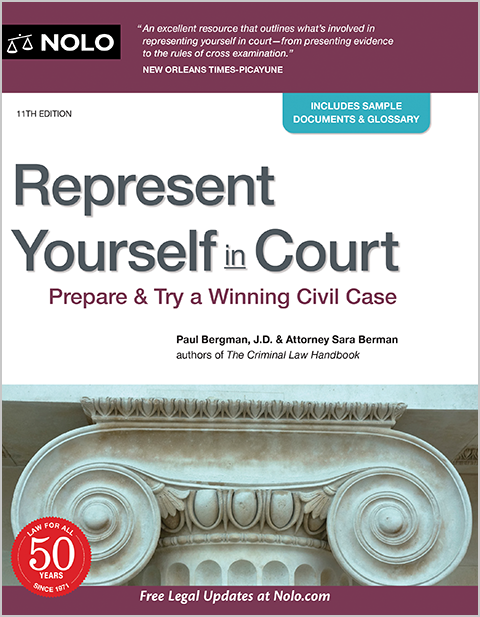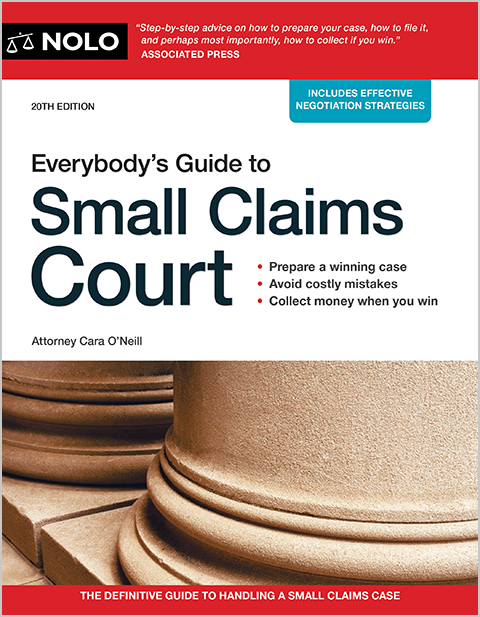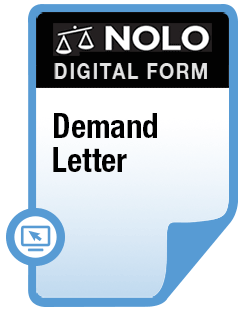Step-by-step instructions you can follow to find out where the judgment debtor banks and execute account levies to collect what you're owed.
When asked why he robbed banks, career criminal Willie Sutton famously replied "Because that's where the money is." While the circumstances are much different, the same reasoning applies when you're trying to collect a money judgment. Want to get paid? Go where the money is. In many cases, that will mean levying (seizing the funds in) the judgment debtor's bank accounts.
We provide a basic, six-step guide to collecting your judgment with levies on bank or other deposit accounts:
- Step 1: Gather information about the judgment debtor's accounts
- Step 2: Determine whether the funds are exempt from seizure
- Step 3: Prepare and file the necessary court documents
- Step 4: Have the documents served on the bank, and notify the judgment debtor
- Step 5: Respond to objections and claims of exemption, and
- Step 6: Monitor compliance and account for all funds collected.
The steps we describe are generally consistent across most states. Simply be aware that each state gets to decide on its own account levy rules and procedures. Yours might have different or additional steps, or use slightly different terminology. If you're not sure what to do, get advice from a local collections attorney.
Before you begin, you might want to learn more about the collection process generally. If bank levies aren't a viable collection option, consider wage garnishment and judgment liens as alternatives.
- Gather Information About the Judgment Debtor's Accounts
- Are the Funds Exempt From Seizure?
- Prepare and File the Necessary Court Documents
- Serve the Bank and Notify the Judgment Debtor
- Respond to Objections and Claims of Exemption
- Monitor Compliance and Account for Collected Funds
- Get Help With Your Bank Levy
Gather Information About the Judgment Debtor's Accounts
The first step in levying bank accounts is finding out where those accounts are. Don't expect cooperation from the judgment debtor. If anything, they'll actively resist your efforts to find out where they keep their money.
When You've Done Business With the Judgment Debtor
Have you done business with the judgment debtor? If so, you might have a head start on the account-sleuthing process. Maybe you sold products or services to the judgment debtor and they paid with a check. Your bank, when it processed the check, took a picture of it. That picture has the information you need to prepare the bank levy paperwork:
- the bank's name, and maybe its address
- the account holder's name
- the bank's routing number, and
- the account number.
For fairly recent transactions—within the last year or so—you might be able to find the picture using your bank's online banking app. For transactions in the distant past, you'll probably have to ask the customer service department to look at your account records, make a copy of the check, and send it to you.
Other Ways to Find Account Information
Here—ranked from least to most expensive—are some common ways to get information about the judgment debtor's bank accounts.
- Online research. In today's connected world, a computer with internet access can be a handy way to uncover clues about deposit (and other) accounts. Look for information about mortgage lenders (when the lender is a bank, the judgment debtor might have a checking or savings account there) in the county's register of deeds office. The secretary of state might have financing statements for autos, other motor vehicles, trade fixtures, and maybe more. You can probably download copies of records for free, or for a nominal ($5 to 15 per record) charge.
- Post-judgment interrogatories. After you've been awarded a money judgment, state law provides tools to learn about the judgment debtor's financial circumstances. Post-judgment interrogatories—written questions the judgment debtor must answer in writing and under oath—can be a very useful tool. In some states, you must use pre-approved form interrogatories. In others, you're allowed to draft your own questions. The typical cost to send interrogatories will be under $100.
- Judgment debtor examination. As the name suggests, you can compel the judgment debtor to appear for an examination, under oath and on the record, to answer questions about assets, employment and income, living expenses and financial obligations, and much more. As part of the examination, you can require that the judgment debtor produce records like tax returns, bank statements, deeds, and income information. Depending on state law and your circumstances, a judgment debtor exam will cost you between $250 and $500.
- Private investigators and asset locators. It might make sense to hire a private investigator or asset locator to get detailed, verified information about the judgment debtor's financial condition. Look for reputable, highly rated providers, and get pricing for a range of services. Depending on the services they provide, you can expect to pay from $500 to $1,500 for a comprehensive report. Because of the cost involved, this option probably doesn't make sense when you're trying to collect a typical small claims judgment.
Be on the lookout for state-specific post-judgment asset discovery tools. In Illinois, for example, the "citation to discover assets" is a powerful information-gathering tool that's available at moderate cost. (See 735 Ill. Comp. Stat. § 5/2-1402 (2025).) The Illinois courts website has approved forms users can download and complete. Depending on the county and judgment size, the total cost for a citation (not including attorneys' fees if you're represented) will be between $80 and $250.
Are the Funds Exempt From Seizure?
State-law exemptions allow individual judgment debtors to shield some property from judgment creditors. As a rule, it's up to the judgment debtor to claim any exemptions.
Typical Exemptions for Deposit Account Funds
Here are the kinds of funds found in deposit accounts that typically are exempt, in whole or in part.
- Wages. Under federal law, a judgment debtor can exempt up to 75% of their wages from garnishment. Some states allow more generous wage protection, including a "head of household" exemption.
- Public benefits. A judgment debtor can claim as exempt Social Security, veterans, welfare, unemployment, and workers' compensation benefits.
- Retirement benefits. In most states, a judgment debtor can exempt some or all of their public and private retirement benefits, including IRAs and Keoghs.
- Insurance proceeds. Most states let a judgment debtor exempt disability and health insurance benefits, matured (paid out) life insurance proceeds needed to support the debtor and their family, and the loan value of most life insurance policies.
The Bank Might Be Responsible for Protecting Funds
Sometimes, the bank is responsible for protecting a judgment debtor's exempt funds. Social Security, Supplemental Security Income, veterans benefits, and other federal benefits that are directly deposited to the judgment debtor's account likely fall within this protection. A bank can't freeze these funds when they were direct deposited within two months before the date of levy.
(Learn more about how veterans benefits are shielded from collection.)
Special Rules for Joint Accounts
Suppose you have a judgment against one spouse but not the other. The married couple owns a joint bank account, and you want to levy the funds. State law will determine whether you can levy all, half, or none of the money. Be very careful not to levy funds in violation of state law, or you can be looking at liability for damages or penalties.
(Find out more about levying joint spousal accounts and joint non-spousal accounts.)
Prepare and File the Necessary Court Documents
When it comes to the levy documents and how to file them, there are likely to be significant differences from state to state. Start with online searches of your state and local court websites, as well as legal aid or similar webpages that explain the paperwork you need to file and how to file it. Specifically, you're after:
- approved court forms you can (or in some states, must) use
- instructions for completing and filing the forms, and
- general guidance about the specific procedures in your state or local courts.
Watch for Different Terminology
Instead of a "levy," your state might call it something else, like an "attachment," a "garnishment," or an "execution." Regardless of the terminology, the object is the same: You want to serve the judgment debtor's bank with documents that require the bank to freeze any funds belonging to the judgment debtor, and hold the funds until all claims of exemption are resolved and any remaining funds are paid to you.
Don't Start Too Soon
State law will tell you when you're allowed to start collection efforts. In some places, you can begin as soon as you get a judgment. In others, you'll have to wait until the time for an appeal has passed or, if there's an appeal, it has been concluded.
Complete the Application Paperwork
You can't just show up at the judgment debtor's bank with a copy of your judgment and demand payment. Instead, you apply to the court that granted your judgment for an order—probably called a "writ of garnishment" or a "writ of execution." If there's an approved application form, you must use it. In Michigan, as an example, for a one-time bank account garnishment, you use Form MC 13. In lieu of an application form, some states direct you to apply by filing a motion.
You probably submit your application or motion to the court clerk. You'll pay a fee that's likely to range from $25 to $100. In many states, the clerk reviews your application and, if it's complete, issues the writ. A few states require that a judge approve the paperwork. Once you have the writ, you're ready to serve the bank and the judgment debtor with the necessary papers.
Serve the Bank and Notify the Judgment Debtor
The next step is to serve—formally deliver the writ to—the bank. At the same time, you'll notify the judgment debtor by providing them with copies. Here's how it works.
Serving the Bank
It's probably your responsibility to have the writ served on the bank. Depending on state law, you might be able to do this in one of three ways:
- by certified mail—the easiest and lowest cost option
- by having the sheriff handle service—an intermediate cost option that (depending on how backlogged the sheriff is) could take some time, or
- by hiring a private process server—the highest cost option, but likely faster than service by the sheriff.
Proper service is crucial. Without it, the bank isn't obligated to respond—the writ has no legal effect. Note, too, that the bank is entitled to a statutory fee for responding. You'll have to pay the fee up front.
Notify the Judgment Debtor
At the same time (or within a short time after) you serve the bank, you must notify the judgment debtor that you've applied for a bank levy. You do that by delivering to them the documents required by state law. Check the rules in your state, but chances are you must provide copies of:
- your application for the writ
- the writ itself
- a court-approved or statutory notice form that explains their rights and (for an individual judgment debtor) describes how to claim exemptions, and
- a court-approved or statutory exemption form.
As with service on the bank, proper notice to the judgment debtor is essential. Defects in the notice, or failure to notify within the time frame specified by law, probably negates the validity of—or at the very least will slow the progress of—your levy.
Respond to Objections and Claims of Exemption
Once the bank and the judgment debtor have been served and notified, they're expected to respond to the writ.
How the Bank Responds
Generally speaking, the bank responds to your writ by doing two things.
- Answer or return the writ. Within 20 to 30 days after being served (state law will specify), the bank must "answer" or "return" the writ, indicating whether it holds the judgment debtor's funds and, if so, how much it holds.
- Freeze funds in the judgment debtor's accounts. State law likely requires the bank to freeze any funds that aren't protected by federal law. As mentioned above, federal law shields up to two months of directly deposited Social Security and other federal benefits. The bank will freeze all other funds until the court rules on claims of exemption and orders non-exempt funds to be disbursed.
Sometimes, a bank levy will prompt the judgment debtor to pay the judgment or make other arrangements. When that happens, you should notify the court and the bank, and make arrangements to release the levy.
How the Judgment Debtor Responds
A judgment debtor can object to the levy for any number of reasons. For example, they might claim that the writ application was incorrect or inaccurate, or that it wasn't properly served. Individual judgment debtors can also claim that some or all of the funds in an account are exempt from collection. To claim an exemption, the judgment debtor will have to file a claim of exemption form, describing which funds they believe are exempt and why.
As to both objections and exemptions, it's up to the court to decide. The court will hold a hearing—probably expedited, since freezing the judgment debtor's funds can cause significant hardships—after giving the judgment creditor an opportunity to respond and make arguments.
Monitor Compliance and Account for Collected Funds
If a bank levy succeeds—meaning there are non-exempt funds that can be paid—the court will order them paid according to law. This probably means the bank delivers funds to the sheriff, the court clerk, or directly to you, the judgment creditor.
It's your job to monitor compliance and account for all funds you receive. If anything goes wrong—for example, the bank doesn't pay, or doesn't pay the full amount ordered by the court—you'll need to let the court know and get an order directing compliance. Don't take matters into your own hands by threatening the bank, the sheriff, or the judgment debtor.
When you've been paid in full, state law likely requires that you deliver a satisfaction of judgment, in writing, to the judgment debtor. In a few states, this task falls to the court clerk. State law will let you know what's expected of you.
Get Help With Your Bank Levy
A bank levy can be a powerful and effective judgment collection tool. When you know where the judgment debtor banks and your state's levy procedures are clear and straightforward, collecting what you're owed can be as simple as completing some forms, having them served, and waiting for the bank to send you the proceeds.
Unfortunately, things might not be so simple. Locating exempt funds can be a challenge, state law isn't always easy to understand and follow, and the judgment debtor often complicates the process with objections and claims of exemption. You can quickly find yourself in over your head.
Should that happen, it might make sense to enlist the help of an experienced collections lawyer. This is someone who knows your state's collection rules, and who's experienced in dealing with judgment debtors who are determined not to pay. Even if you prefer to do most of the legwork on your own, legal counsel can help you formulate a collection plan and maximize your chances of a successful recovery.
- Gather Information About the Judgment Debtor's Accounts
- Are the Funds Exempt From Seizure?
- Prepare and File the Necessary Court Documents
- Serve the Bank and Notify the Judgment Debtor
- Respond to Objections and Claims of Exemption
- Monitor Compliance and Account for Collected Funds
- Get Help With Your Bank Levy



